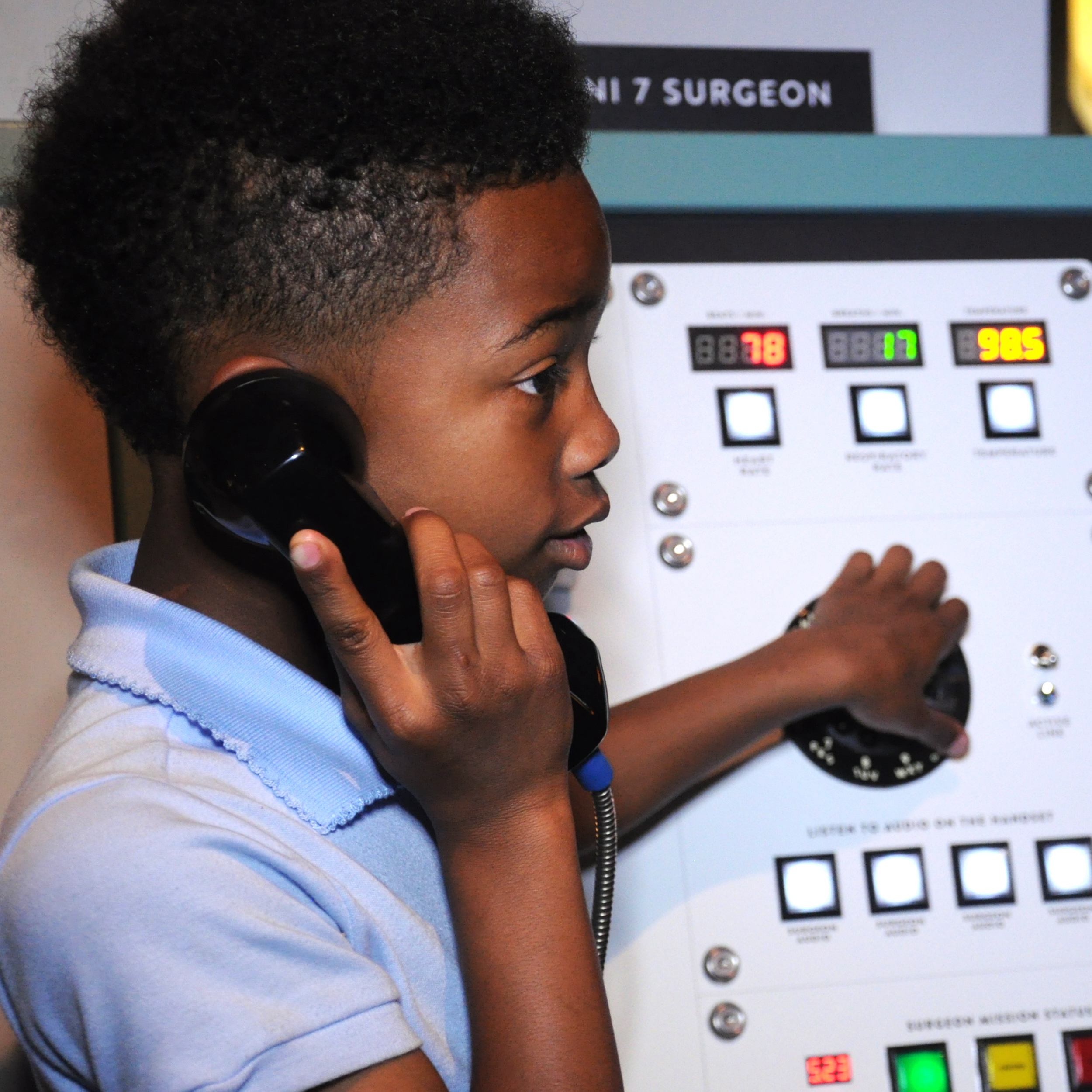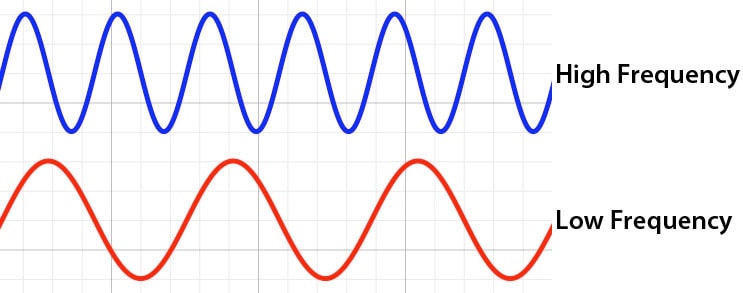Can You Hear Sound In Space?

Header Image: Child using phone in Mission Moon exhibit.
If you have been to a NASCAR event—like the street race coming to Chicago for their third year this July—you know just how loud it can get on the race track! According to Motor Racing Sports, NASCAR Races and NASCAR Engines can reach up to 130 Decibels. If your only experience with car racing is the movie Grease, other ear-piercing noises you may be more familiar with are a rock concert or even nearby fireworks.
Although the NASCAR race decibel level does reach a level that is described as painful, it doesn’t quite reach the eardrum rupture level of a jet take-off.
It’s hard to imagine that a sound so loud on Earth would be non-existent in space. That’s why in this blog we are breaking down the science of sound and explaining why if you plopped a NASCAR race in space you wouldn’t hear a thing.
The Science Of Sound
How does sound work? Sound is a form of energy, often called a sound wave. It’s called a wave, not because it grew up surfing in California, but because the energy of sound is caused by the vibration of matter allowing sound to be transmitted through waves.
In order for sound to be heard you need a source, a receiver, and a medium.
The Source Of Sound
When you speak out loud, your vocal cords vibrate causing tiny air particles to vibrate in your throat, creating a sound wave. A fast vibration will cause waves to be close together and will create a higher pitch, and a slower vibration creates a lower pitch or frequency.

The Medium Of Sound
We aren’t talking about your connection to the spiritual world when we are talking about a medium for sound. A medium for sound is a substance such as a solid, liquid, or gas. Sound is transmitted through waves which travel through different substances or mediums.
We are most familiar with talking about sound traveling through air, as it is often referred to as the standard measure by scientists.
The Receiver Of Sound
You’ve heard the saying, “If a tree falls in a forest and no one is around to hear it, does it make a sound?” A receiver is a critical component to hearing sound. Although many units of measurements fall within human capacity, we can’t rely on just our own human sense of hearing.
As humans, we can only detect sound within a certain range, often between 20-20,000 hertz (Hz). A commonly-known frequency, to give you context to this range, is 440 Hz, the note that orchestras tune to. 440 Hz is also known as the note “A” or standard pitch.
If a sound is powerful enough, you may not even need to hear it. For example, an explosion can typically be heard, however, it can also be felt due to the huge vibrations.
We often talk about sound from a human capacity; species like your family’s dog can detect sounds in a different range of hertz that overlap with humans!
The Speed Of Sound
Before we move on, this blog is about NASCAR, so of course we need to talk about speed. The speed of sound is calculated by measuring the distance that sound travels over a given amount of time.
The best example we can give to understand the speed of sound is the delay that happens when we see a lightning bolt and hear thunder. The delay is caused by the difference in the speed of sound versus the speed of light.
If a meteor starts plummeting down to our little blue dot we call home, as it reaches our atmosphere, it would have a medium to move through, meaning that any sound it makes we would be able to hear.
Can You Hear Sound In Space?
Now that you have the background to the science behind sound, we can answer the initial question, “Can you hear sound in space?” In short, no, you cannot hear any sounds in empty space.
There is no sound in space because there is no air or water, meaning no medium for the sound to move through! With no air or water there is nothing to vibrate. Putting a NASCAR track in space (an unlikely experiment) would not even make a whisper of sound, despite the painfully loud volume on Earth. You wouldn’t even need ear protection to watch this NASCAR experiment in space…just a high-tech spacesuit.
Why? Because space is a vacuum, though not a perfect vacuum, and not the kind that you can buy at the store. That’s more or less to say that space is mostly empty, and vast. Vastly empty and filled with little to no particles to vibrate and create sound.
That’s why here on Earth, we can see stars because light is able to travel through a vacuum. But we cannot hear stars when looking up, because sound needs a medium, though we didn’t ask if they’ve tried calling on the phone. Maybe it would work better for a planet like Saturn because they would be able to see the rings—get it?
Deep Space Sounds
Okay, now let’s get even more scientific.
You may have heard (pun intended) research about the eerie sound of planets and stars, but they aren’t talking about sound in the same way as we do here on Earth. When you hear a scientist talking about listening to stars, they are often referring to electromagnetic radiation or data sonification.
What is data sonification? Data sonification for example takes elements of an image like brightness and position that are assigned pitches and volumes as a way to conceptualize known data in a new way. Gravitational waves are not sound, but are a different sense with which we can explore the cosmos in something other than light. This is a totally independent phenomena than light. Gravitational waves are often sonified because the frequencies of gravitational waves we can detect are similar to the human audible range (~10–2000 Hz), so the data can literally be directly converted into sound and listened to.
There are some instances in which astronomers do study sound waves in space. In empty space, there is no medium, so no sound. However, there are parts of space that are not empty. For example, sound waves can travel through stars, and these sound waves encode themselves in the light that we see from stars. This is a whole area of research called astroseismology.
Get More Space Facts
Need some space in your inbox? Sign up for our emails to get the latest breaking space news, Adler happenings, and be the first to hear about new and limited-seating events directly from us!
You can also connect with us, with science, with our universe—and with other people—exactly where you are! Follow the Adler Planetarium on Instagram, TikTok or YouTube!







